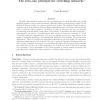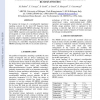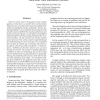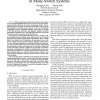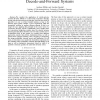23 search results - page 1 / 5 » The zero-one principle for switching networks |
STOC
2004
ACM
14 years 5 months ago
2004
ACM
Recently, approximation analysis has been extensively used to study algorithms for routing weighted packets in various network settings. Although different techniques were applied...
CORR
2008
Springer
13 years 4 months ago
2008
Springer
We propose the design of a reconfigurable impedance matching network for the lower RF frequency band, based on a developed RF-MEMS technology. The circuit is composed of RF-MEMS o...
IPPS
2003
IEEE
13 years 10 months ago
2003
IEEE
With the current trend in integration of more complex systems on chip there is a need for better communication infrastructure on chip that will increase the available bandwidth an...
INFOCOM
1999
IEEE
13 years 9 months ago
1999
IEEE
With the proliferation of high-speed networks and networked services, provisioning differentiated services to a diverse user base with heterogeneous QoS requirements has become an ...
WCNC
2010
IEEE
13 years 3 months ago
2010
IEEE
—We consider the application of switch-and-stay transmit diversity (SSTD) to a three-node cooperative diversity system with decode-and-forward relaying. The basic idea of SSTD ge...
